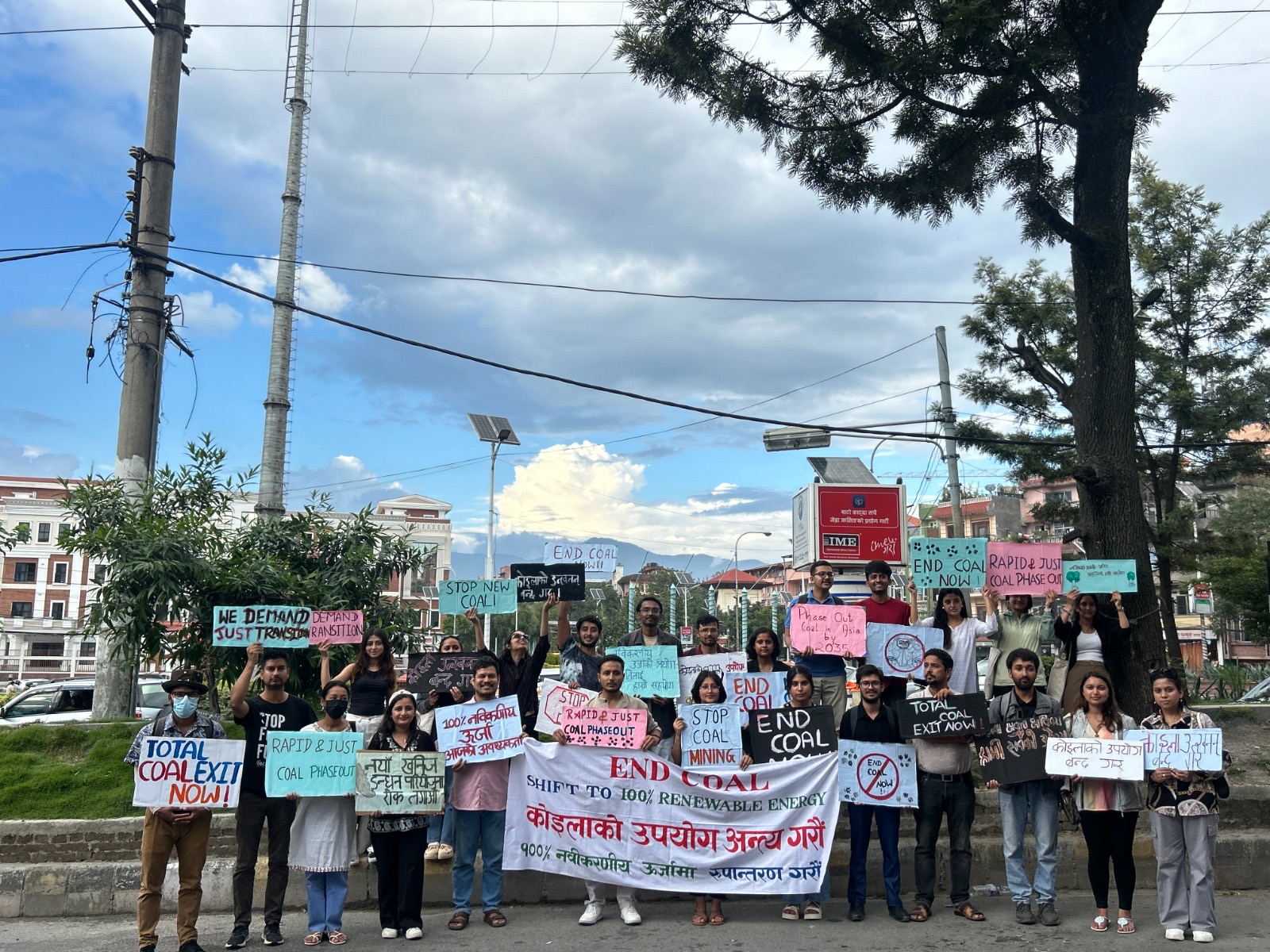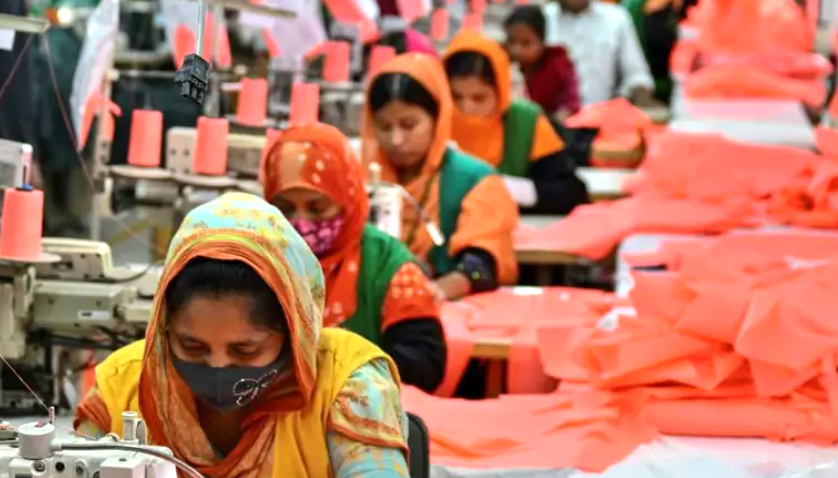Climate Activists in Nepal call for a fossil-fuel free future

Kathmandu – Climate Activists from various organisations and constituencies in Nepal demonstrated at Maitighar Mandala, demanding a fossil-fuel free future, on Friday – the first day of the Global Day of Action for Climate Finance and a Fossil-Fuel Free Future. This, mostly a solidarity action, is part of a bigger picture globally and in Asia, where more than ten thousand people joined demonstrations across Asia to demand the rapid phase out of coal, kicking off a week of climate marches happening around the world explicitly calling for an end to fossil fuels worldwide and the delivery of climate finance obligations by developed countries ahead of the United Nations Summit of the Future in New York and the COP29 Summit in November. Hundreds of climate marches and actions are planned between September 13-20 around the world.
Over 100 coordinated mass actions took place in 72 cities and provinces in the Philippines, Japan, Indonesia, Thailand, Bangladesh, Nepal, Pakistan, Sri Lanka and India.
In Nepal, a small but dedicated mass representing various organisations and constituencies demonstrated at Maitighar Mandala, demanding a fossil-free future, also at the same time expressing solidarity for the wider Asian region and their fight against the continued investment in and use of coal, a deadly emitter of greenhouse gases that is fueling the climate crisis.
“We are alarmed that new coal is on the rise and that retirement of existing plans is happening too slowly. We call on governments and corporations to immediately stop the expansion of new coal and to rapidly phase out existing coal in Asia. Coal-fired power plants have devastated the climate, poisoned the land, water and air in our communities, and worsened inequalities in the Global South,” said Lidy Nacpil, coordinator of Asian Peoples’ Movement on Debt and Development (APMDD).
Nacpil said rich countries bankroll coal expansion despite pledges to speed up the transition away from fossil fuels. “The toxic coal industry has been on the decline in the Global North as a result of pressure to transition away from fossil fuels, but they continue to build new coal infrastructure and to prop up existing ones in Asia with funds from countries like the US, Canada and the UK – countries that boast of no new coal domestically,” Nacpil said.
The UN Summit of the Future brings world leaders together on September 22-23 during the UN General Assembly to agree on a Pact for the Future, a vision for global cooperation in the coming decades. The latest version of the pact reinstates a commitment of governments to transition away from fossil fuels, which disappeared from the second draft of the pact. The COP28 Climate Summit in Dubai called on nations to transition away from fossil fuels as part of a decision by nearly 200 Parties on the world’s first ‘global stocktake’ to ratchet up climate action before the end of the decade.
The latest evidence shows that the world’s largest banks based in developed countries continue to provide finance for coal projects, from fossil fuel subsidies to public financing and private investments. Between January 2021 and December 2023, commercial banks provided US$ 470 billion in loans and underwriting to the coal industry.
More than 200 organisations in Asia sent a letter to Asian governmentsdemanding decisive steps to end the expansion of coal in their countries, specifically a permanent ban on new coal plants and an immediate stop to direct and indirect public and private financing of new coal.
They also call for a rapid and just phase-out of existing coal to be completed by 2035, which should include the immediate retirement of highly polluting old coal plants, the permanent shutdown of mothballed plants, which does not contribute to current demand, and the early closure commitments for all existing coal plants. Currently, some 75% (1,626 GW) of global operating capacity is not covered by a coal closure commitment and the majority are in Asia.
“The phase out of coal in Asia must happen fast, fair and it must be funded globally. It must include providing alternative decent jobs, livelihoods, and homes for workers and communities on the frontlines of the climate crisis,” said Dr Suresh Tamang, from Rural Reconstruction Nepal, RRN who is supporting the cause for a fossil-free future.
Global coal use and production rising
A few years ago, the world made major strides in eradicating coal use and production in response to the climate crisis. From 2015, when the Paris Agreement was adopted, to 2021, the global pipeline of proposed coal power plants showed a 76% collapse. Today, global coal use and capacity has rebounded, growing to an all-time high in 2023, driven by strong demand in countries in Asia. Total global capacity in pre-construction has also increased, with countries in Asia collectively accounting for the majority of these projects. Meanwhile, coal power plant retirements were at the lowest level since 2011. According to analysis,phasing out operating coal power by 2040 would require an average of 126 GW of retirements per year for the next 17 years or about two coal plants per week, excluding coal plants under construction and in pre-construction.
“Coal is not the answer to rising demand in Asia. Renewables have become the cheapest sources of electricity everywhere. We call for the phasing out of fossil fuel subsidies and shifting finance to the clean energy transition. This will make clean renewable energy more accessible in the Global South,” said Avishek Shrestha, from Digo Bikas Institute, who is one of those actively participating in the protest in Nepal.
Research shows that coal developers risk billions worth of stranded assets as renewables outcompete coal worldwide. In 2023, according to a report of the International Energy Agency (IEA), an estimated 96% of newly installed, utility-scale solar PV and onshore wind capacity had lower generation costs than new coal and gas plants. Three-quarters of new wind and solar PV plants likewise offered cheaper power than existing fossil fuel facilities.


















Facebook Comments